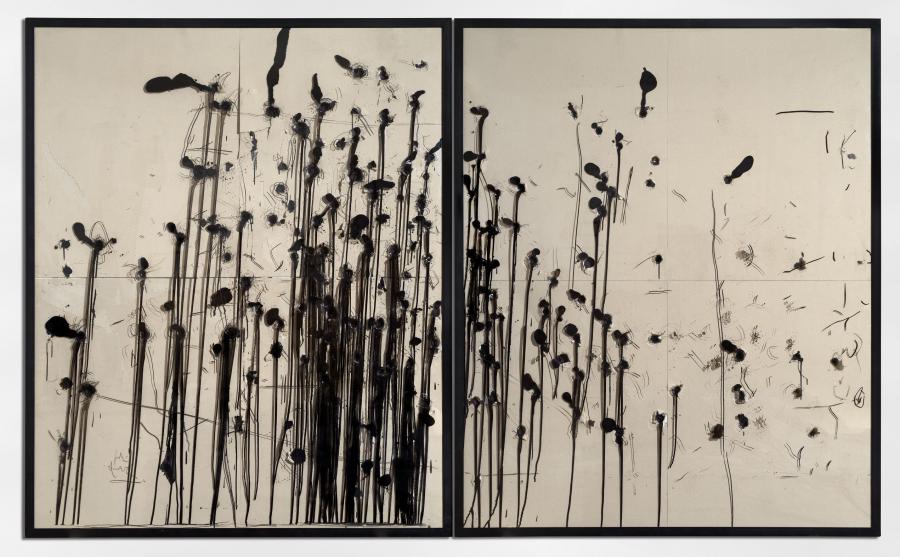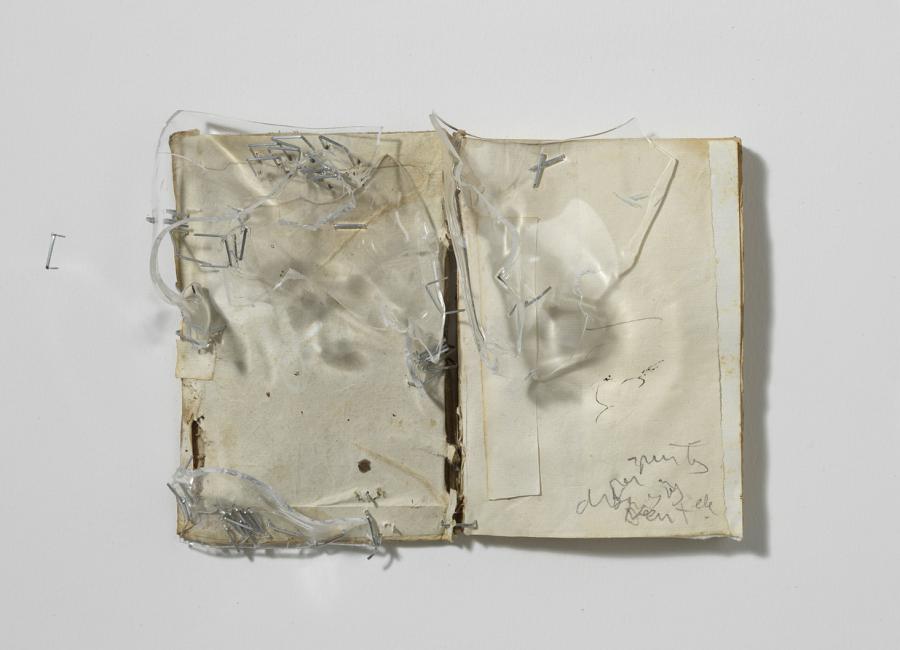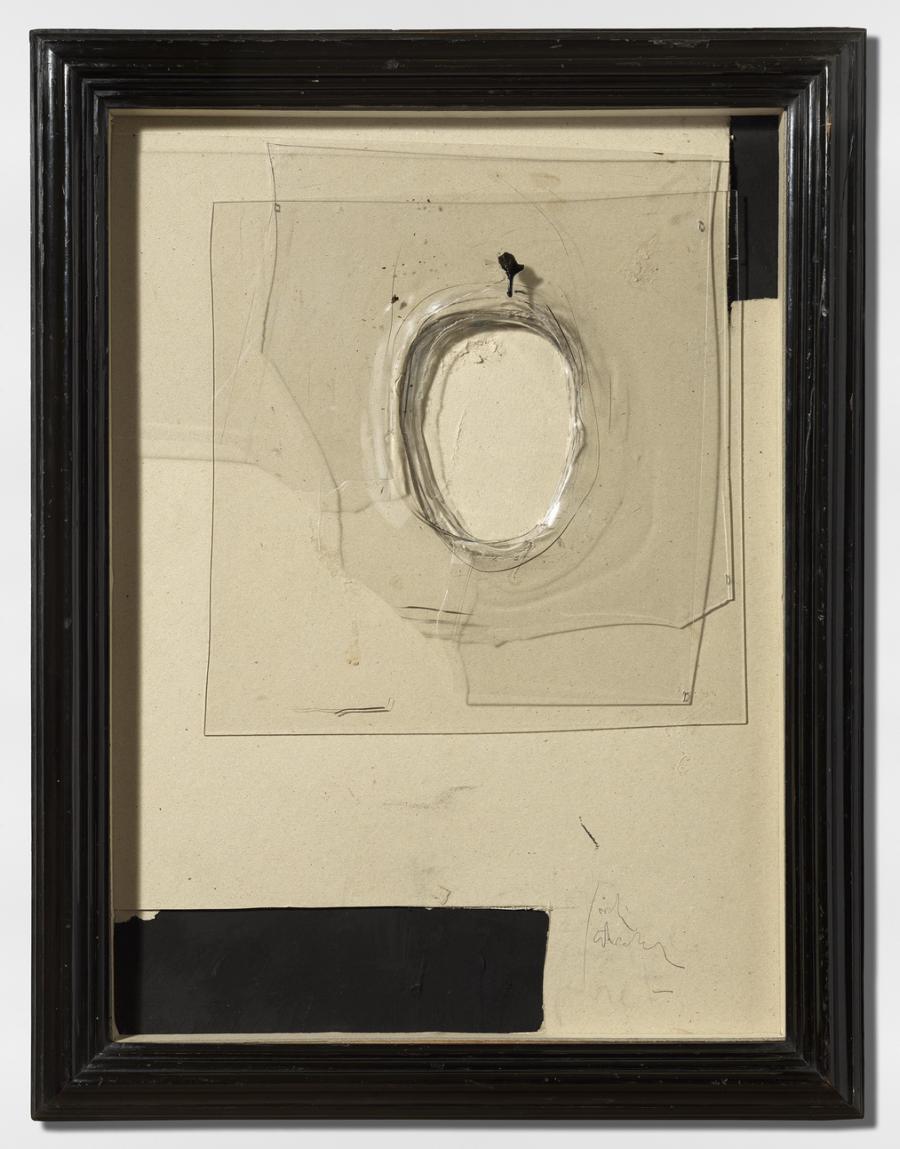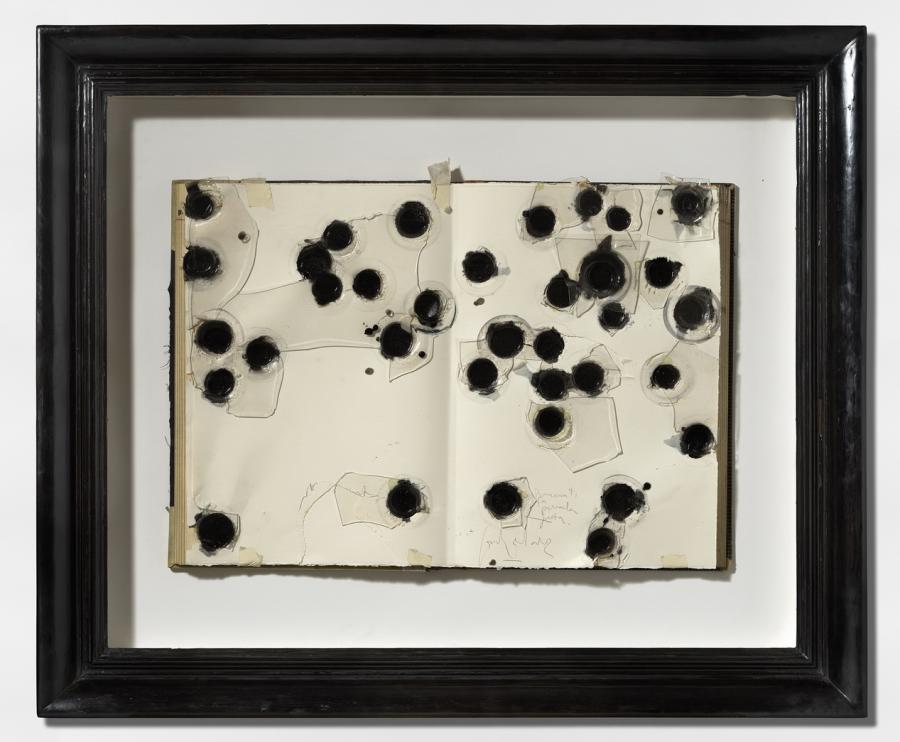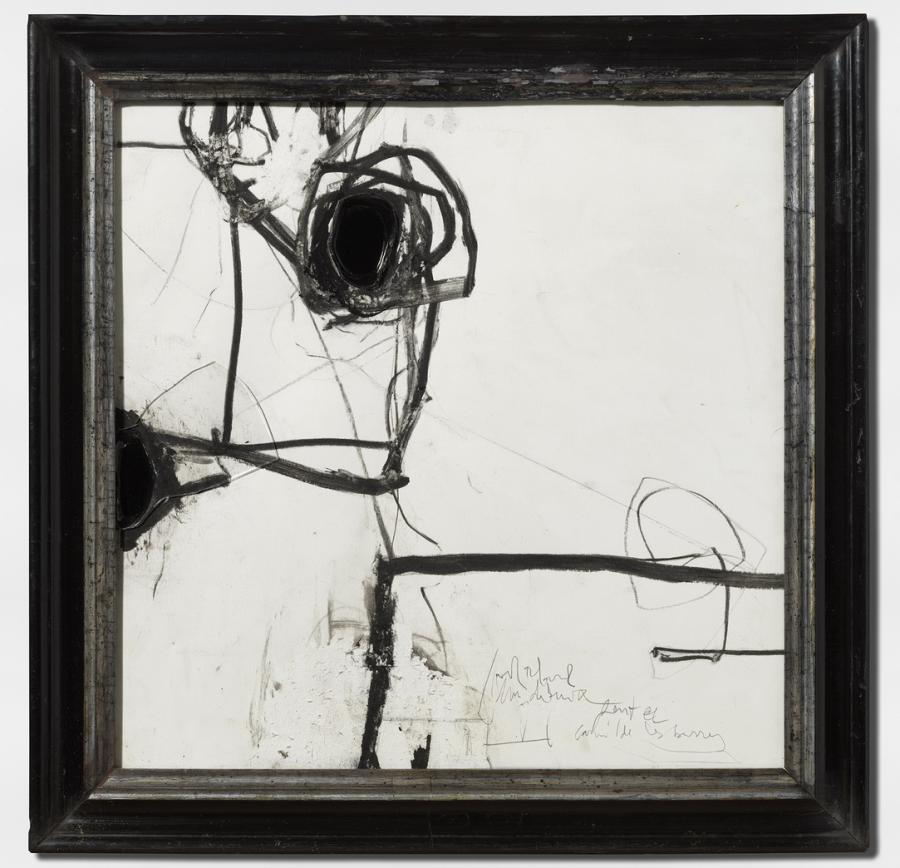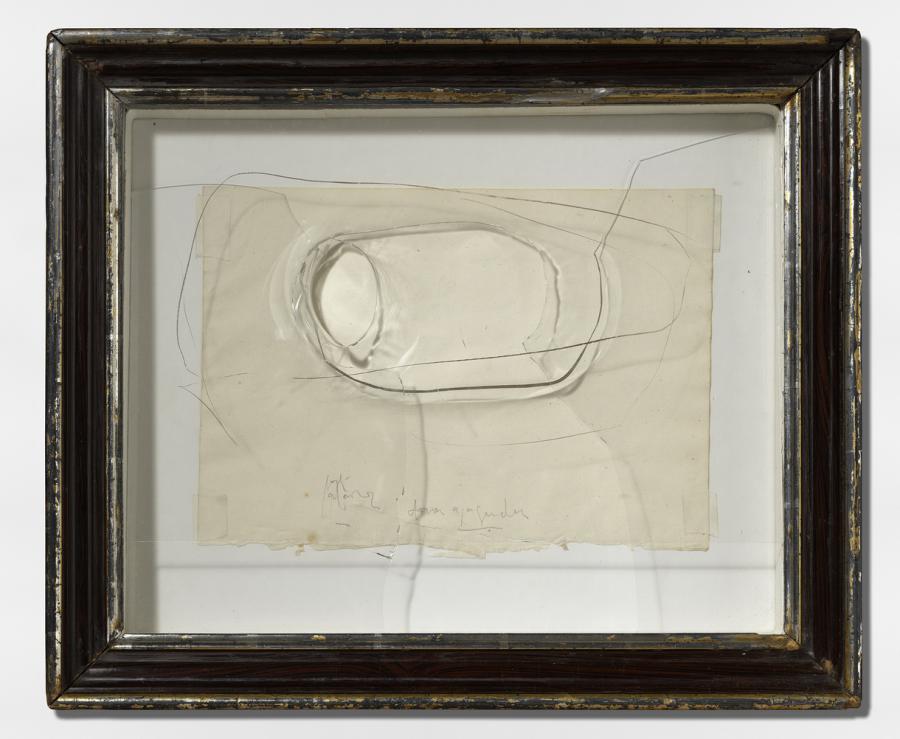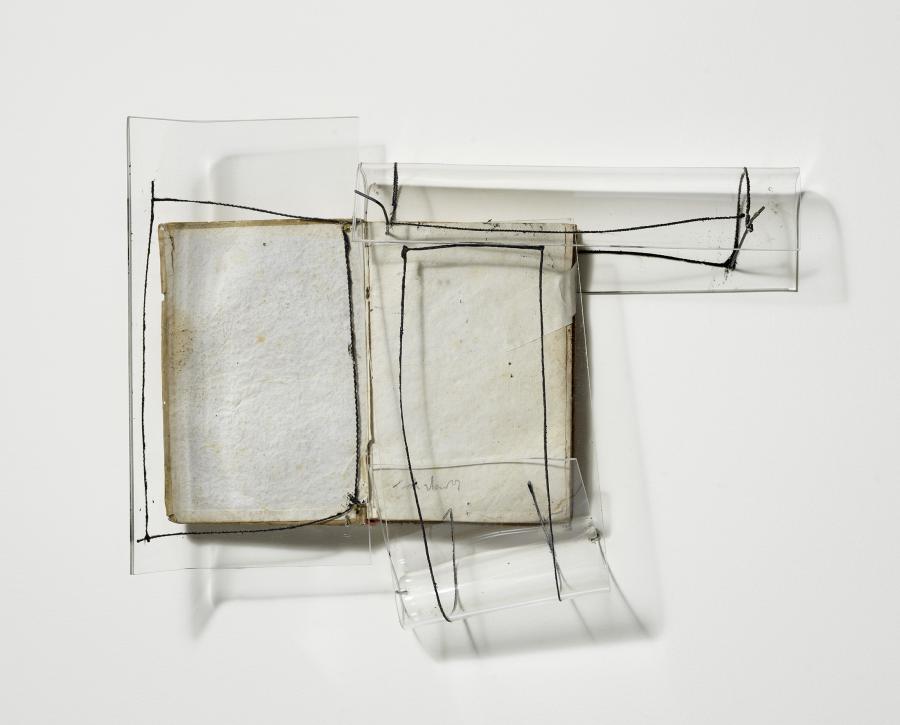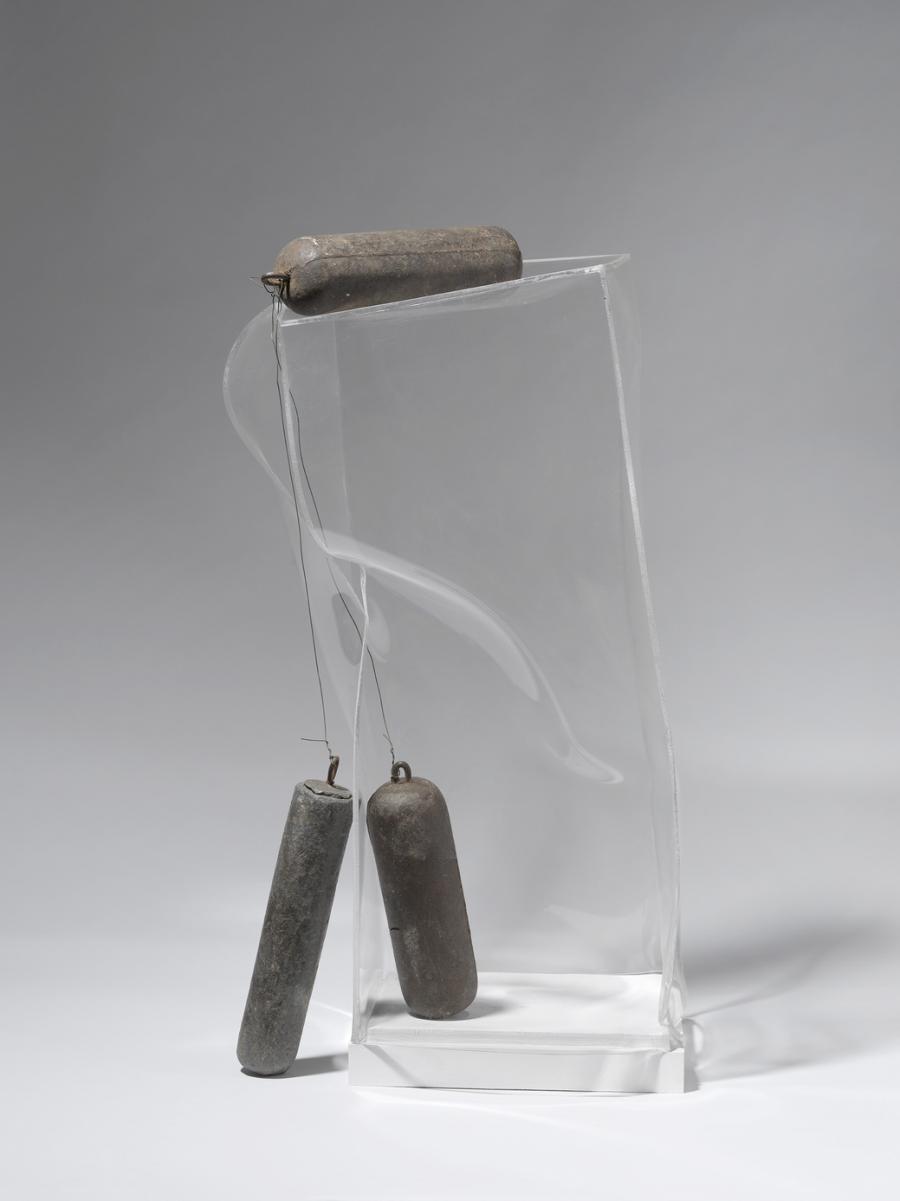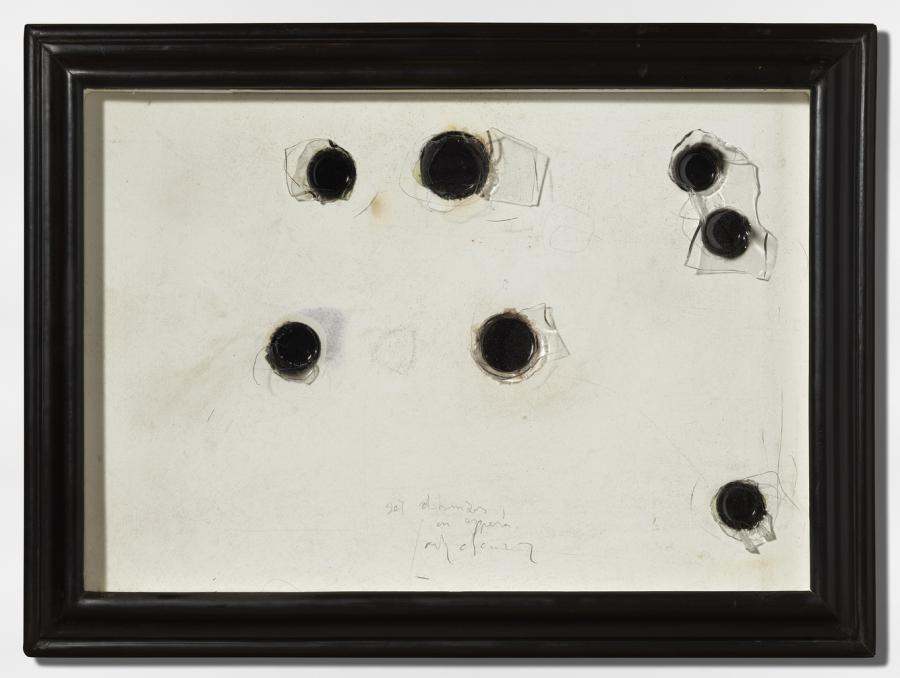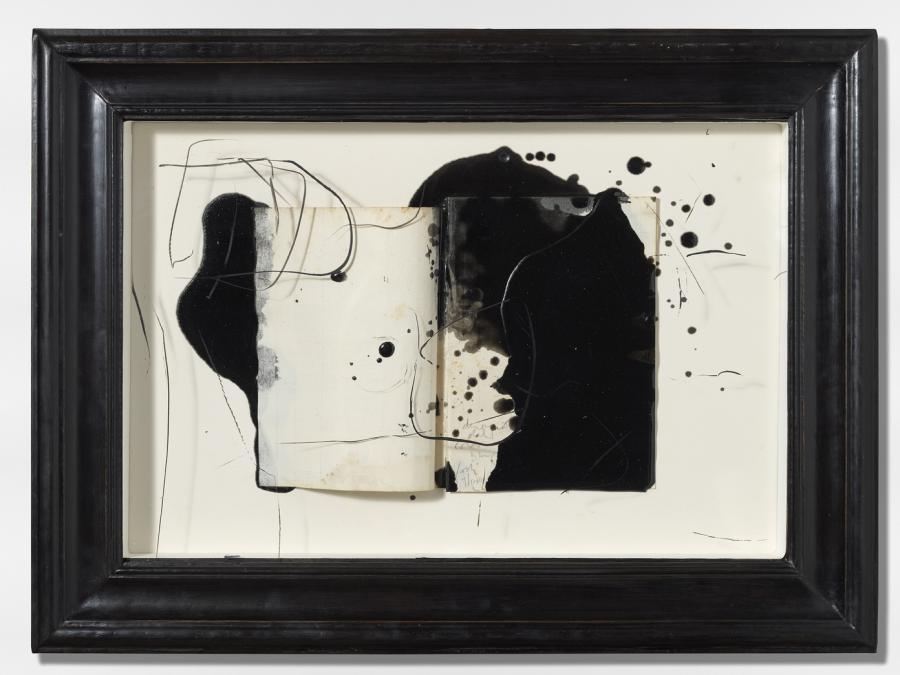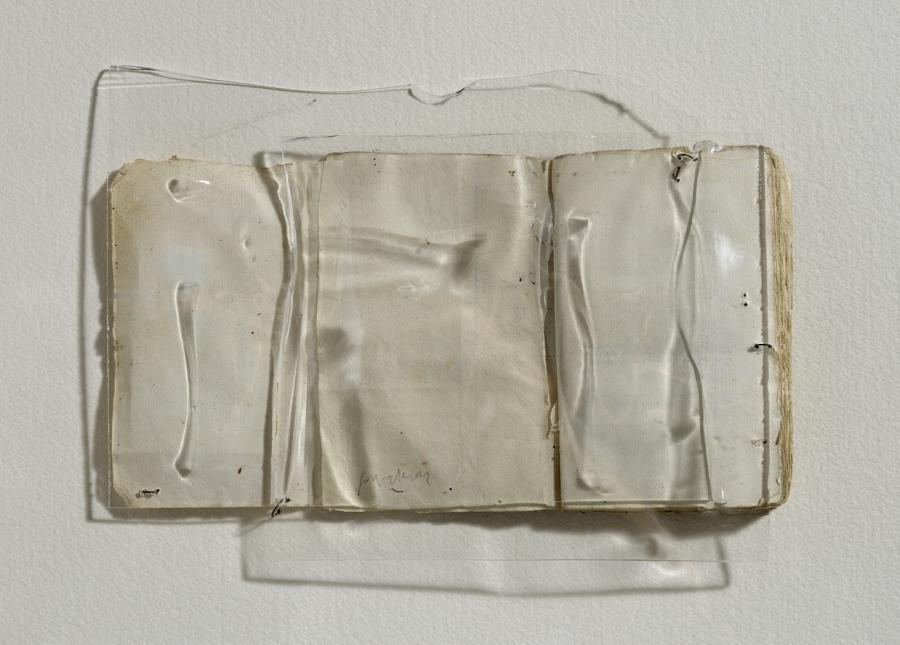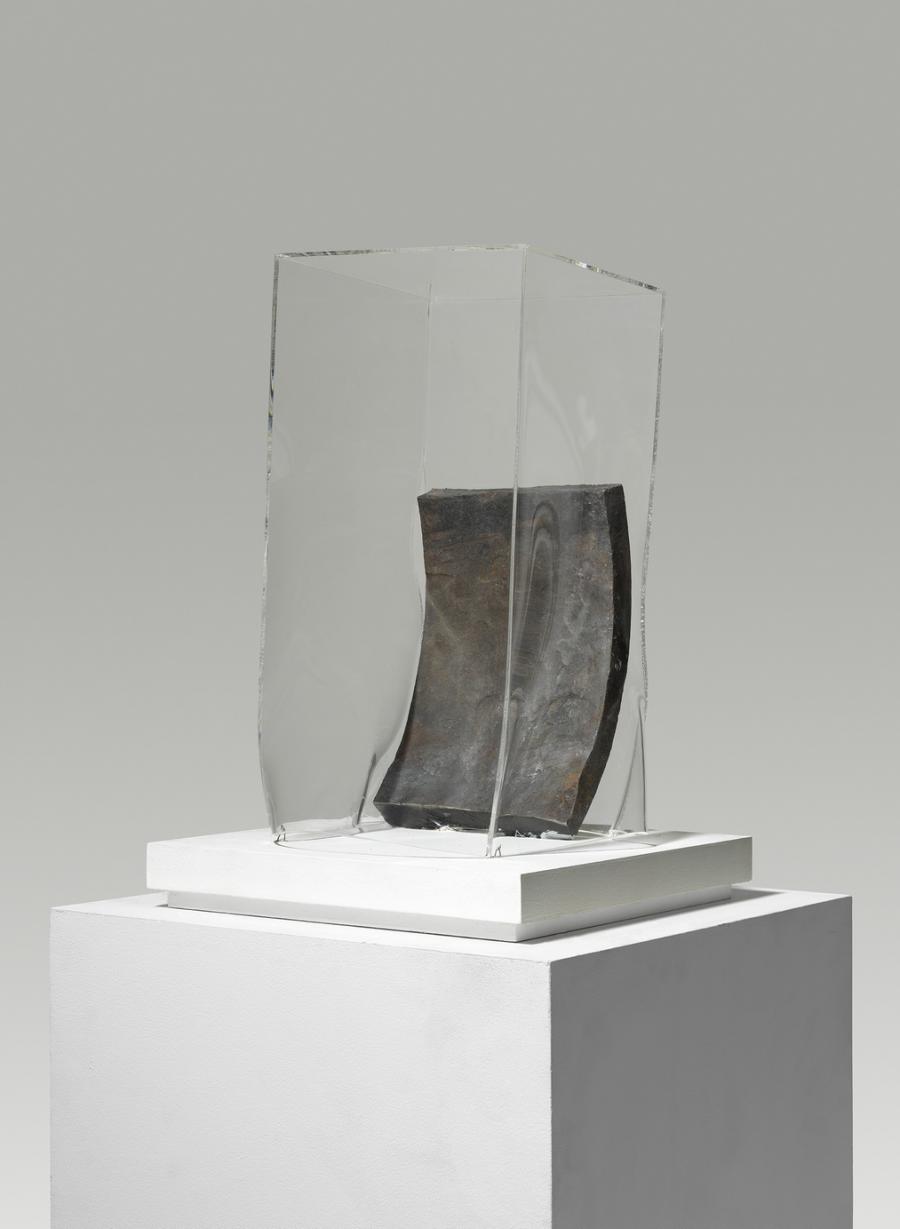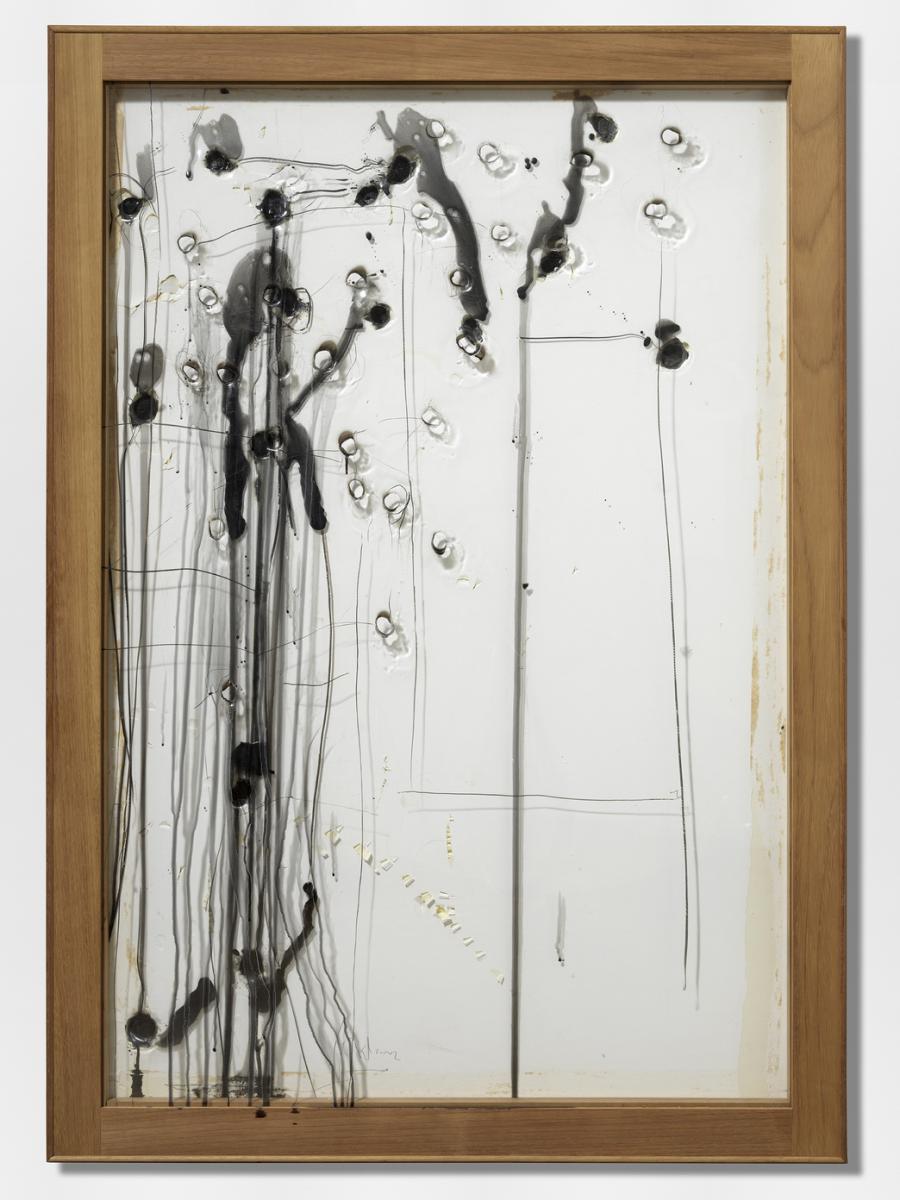Jordi Alcaraz. Cosas elementales.
Alcaraz’s discourse stems from the classical tradition of painting and sculpture, arriving to a reflection on volume, language and time through the use of materials, such as water, glass, mirrors, reflections, or books that include this idea.
In his artistic language the visual transgression predominates, a playful dynamic among many different gazes and the combination of transparencies and holes that allow a glimpse of hidden, magical spaces. Thus Jordi Alcaraz establishes, through his works, an unprecedented, surprising and metaphorical relationship with the world.
Sculptures, paintings and drawings, always through his peculiar treatment of materials, and his poetic word games and unexpected titles. Sets of pigment bags that sink into glass surfaces, poetically showing the beginning of the painting, wooden sculptures that pierce the acrylic urn in which they are in, passing from the darkness of the night to the light of day, colors that flee from their cans through imaginary holes, impossible portraits.
Due to his obsession with the craft of art, in his works he delves into the almost obsessive exploration of the artist’s work: drawing, sculpting, painting …, focusing rather in the exercise of doing, than in the works as the completion of an action. As a result, absence seems to be more relevant than evidence in the works. The absence of almost everything, and the utmost importance to the disappearance of the work, with the permanence of the action. What matters is the sensation of drawing, what is there at the precise moment before doing it, the impression at the end, but not the work itself, not the resulting drawing. There is no image or reference to any idea, the artist draws but there is no drawing left. We can see the space that has been left, the trace of the material used, but the absence of anything else is almost absolute.
Jordi Alcaraz breaks the material in different ways, everything is less evocative and more poignant. Layers of materials are superimposed as protective shields, and they build diverse and more complex layers of meaning.
His works can be found in collections such as Biedermann Museum, Donaueschingen (Germany), Colección Fontanal Cisneros, Miami; Williams Collection, Massachusetts; Olor Visual, Barcelona; or Fundación Banco Sabadell.


